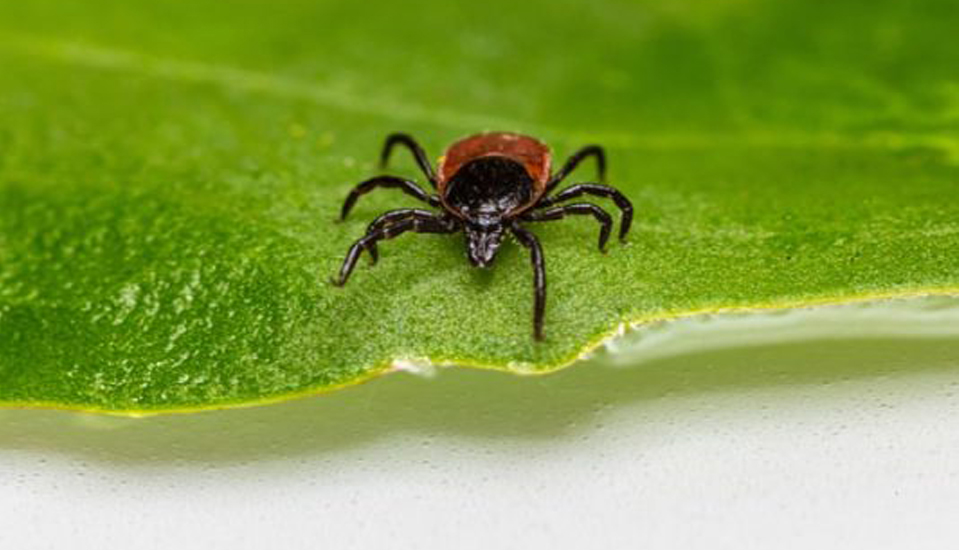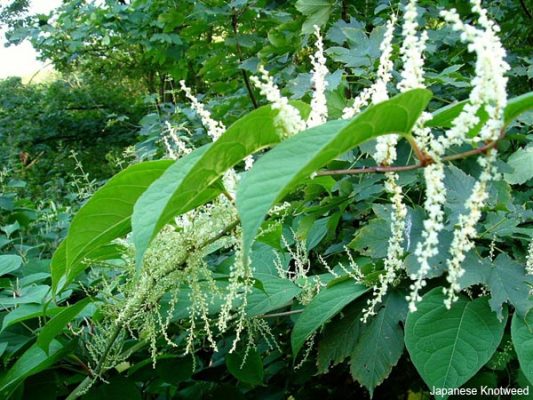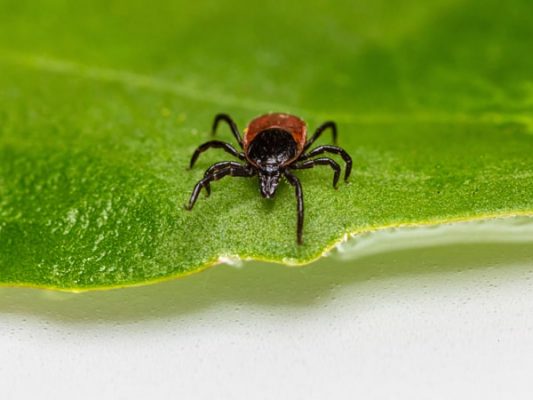Feed Your Body to Help Fight Lyme Disease: An Integrative Functional Medicine Approach
POSTED ON SEPTEMBER 3, 2020 BY TORONTO FUNCTIONAL MEDICINE CENTRE

Lyme disease is a multi-system bacterial infection spread to humans through infected black-legged ticks. In Canada, the number of Lyme disease cases three years ago was 2,025, a significant climb from 144 cases reported in 2009.
Lyme disease gradually loses its sensitivity to conventional antibiotic treatments; this leaves recovery from the condition to be difficult for patients. If left untreated, Lyme disease may cause:
- Anxiety and/or depression
- Brain fog
- Chronic inflammation
- Chronic generalized symptoms of pain
- Decreased hormone production such as thyroid and the adrenal glands
- Joint pain
- Insomnia
- Lyme arthritis
- Severe fatigue
- Weak immune system
According to integrative functional medicine, nutrition can play a role in the body’s response to infections. This is why implementing an anti-inflammatory diet may be recommended for patients recovering from Lyme disease.
Removing Inflammatory Foods From Your Diet
Lyme disease has many incapacitating symptoms that may impact the body and brain, resulting in excessive inflammation. Eating foods that are likely to cause inflammation may encourage Lyme disease to have detrimental effects on the body. An anti-inflammatory diet may be essential to reinforce the body’s immunity against these changes.
Processed foods with yeast and additives are known as inflammatory foods. Foods linked to aggravating inflammation and Lyme disease also include those containing gluten, refined carbohydrates, dairy, saturated fats and sugars. If you’re recovering from Lyme disease, try removing these inflammatory foods from your diet. Swap these foods for wholesome anti-inflammatory food choices to support detoxification and help lower inflammation.
Some of the benefits of adopting an anti-inflammatory diet for Lyme disease recovery may include:
- Reduced inflammation (caused by immune activation)
- Immune system support
- Support for healthy digestive function
- Natural detoxification of the body
- Consumption of antioxidants that quench inflammation
- Consumption of vitamins and minerals that support a healthy immune response
- Gut health optimization
Some patients with Lyme disease experience positive results when they start eliminating problematic foods; others may continue to have the negative symptoms of Lyme disease along with damaged digestive issues. Please note that patience is key; finding the right dietary matches for your body may take time. A diet diary may be helpful in figuring out the different kinds of foods that make you feel unwell.
Everyone’s body is unique and may require a customized diet to maintain optimal health. Thus, a food sensitivity test may help determine which foods you’re sensitive to. This will allow you to become aware of the foods that create inflammatory reactions while feeding into the symptoms of Lyme disease.
Nutritional Support For Alleviating Lyme Disease Symptoms
As we mentioned, once inflammatory foods are removed from the diet, a nutrient dense, anti-inflammatory diet may be a suitable approach. This type of diet helps reinforce the immune system and gastrointestinal health of patients with Lyme disease.
When the immune system senses an “invader”, it releases pro-inflammatory cytokines. Cytokines are immune messengers that inform the immune cells to fence off the affected area to prevent the infection from spreading.
When we have an infection like Lyme disease, the pro-inflammatory cytokines are released through the body, causing widespread inflammation to our soft tissues, including the joints, organs, and brain. Soft tissue inflammation — combined with the damage caused by the infective agent — is what causes many of the symptoms linked to Lyme disease.
With that, there are a number of foods and herbs with anti-inflammatory properties. These include:
- Grass-fed and organic animal proteins: Animal proteins contain the full spectrum of amino acids required for healthy physiological function. These proteins also contain low fat totals, additional omega-3 fatty acids (which are healthy for the heart), plus high amounts of conjugated linoleic acid (which are thought to help lower the risks for heart disease and cancer). Grass-fed proteins also contain antioxidant vitamins, including vitamin E.
- Wild-caught fish high in omega-3 essential fatty acids (EFA): Omega-3 EFAs are plentiful in fatty fish, such as salmon and cod. Research confirms the anti-inflammatory effects of omega-3s.
- Leafy greens: Dark leafy greens (kale, spinach, collard greens and Swiss chard) contain powerful antioxidants and phytochemicals with anti-inflammatory and gut health-supporting properties.
- Berries: These are among the highest-rated fruits in terms of antioxidants. They are especially high in the antioxidant and anti-inflammatory carotenoids, lutein and zeaxanthin. Berries are also low in sugar.
- Turmeric: The bioactive ingredient in turmeric is curcumin, a substance that contains both antioxidant and anti-inflammatory properties.
- Cloves: Contain eugenol, a compound that blocks the COX-2 enzyme that causes inflammation. (NSAIDS (i.e. ibuprofen, aspirin) block pain by inhibiting COX-2.)
- Healthy fats: These include fats found in olive oil, coconut oil, avocados, wild-caught seafood and seeds, which all help maintain a healthy inflammatory balance.
There are many other foods, herbs, and spices that contain anti-inflammatory properties. Naturopathic doctors recommend organic foods when possible, which may minimize exposure to pesticides and other chemical toxins.
Additionally, you may want to try following these anti-inflammatory diet regimes:
The Ketogenic Diet
This is a high-fat, adequate-protein, low-carbohydrate diet that is commonly used to treat hard-to-control epilepsy. For some people with severe neurological Lyme disease though, the ketogenic approach may be beneficial.
When suffering from Lyme disease, metabolic challenges occur in the body, sometimes to the point of jeopardizing neuron resilience and cells. The ketone molecules (i.e. β-hydroxybutyrate), which are produced while consuming the Ketogenic Diet, may provide an efficient alternative source of energy and an increase in mitochondrial profiles; in turn, this helps neurons resist the ongoing metabolic stress caused by Lyme. The Ketogenic Diet has been found to curb neurological and body inflammation; therefore, this diet may also help correct underlying disturbances in Lyme disease.
The Paleo Diet
The Paleo Diet is an anti-inflammatory diet that removes the consumption of processed foods. This anti-inflammatory diet eliminates particular foods that may spur intestinal inflammation and food sensitivities such as eggs, coffee, dairy, nightshade veggies (i.e. peppers), and alcoholic beverages.
Chronic Lyme disease may trigger autoimmunity in some people. Those with Lyme disease and autoimmune disease may benefit from the Paleo Diet, as it’s intended to alleviate autoimmunity by removing foods that contribute to negative immune responses.
Note: The anti- inflammatory Paleo Diet may also eliminate nuts and seeds (as well as any other foods that may cause sensitivity). Although nuts and seeds provide anti-inflammatory omega-3s, they’re known to be common allergens and may trigger food sensitivities. For individuals who are sensitive to nuts and seeds, eating these foods may result in high inflammation it the gut and whole body, which is why nuts and seeds may be removed in this Diet.)
The Next Stage in Lyme Disease Recovery
In this article, we’ve explained how Lyme disease causes excessive inflammation in the body. In order to lessen the symptoms of Lyme disease, the naturopathic integrative functional medicine approach helps reduce inflammation, while minimizing the consumption of inflammatory foods. An anti-inflammatory diet regime, such as the Keto Diet or the Paleo Diet, also provides nutritional support for those suffering from Lyme disease.
Are you seeking a natural way to alleviate Lyme disease symptoms? At Toronto Functional Medicine Centre, we offer a fully integrative Lyme disease program to patients. Our practitioners have designed this program using the principles of integrative functional medicine, with focuses on applying scientifically based natural approaches on diet modifications, medicinal herbs and IV therapy; in turn, these health changes may help optimize the quality of life, treat and protect against Lyme disease. Our nurse practitioner holds experience in prescribing Lyme disease-based antibiotics and other therapies.
Please contact us if you have any questions about treating Lyme disease or natural health concerns. Click here to email us or call (416) 968-6961 to book your appointment.
References
Bough KJ, Gudi K, Han FT, Rathod AH, Eagles DA. An anticonvulsant profile of the ketogenic diet in the rat. Epilepsy Res. 2002;50:313–325.
Bough KJ, Wetherington J, Hassel B, Pare JF, Gawryluk JW, Greene JG, et al. Mitochondrial biogenesis in the anticonvulsant mechanism of the ketogenic diet. Ann Neurol. 2006;60 .
Bransfield RC. Neuropsychiatric Lyme Borreliosis: An Overview with a Focus on a Specialty Psychiatrist’s Clinical Practice. Healthcare (Basel). 2018;6(3):104. Published 2018 Aug 25. doi:10.3390/healthcare6030104
Coughlin, J.M., Yang, T., Rebman, A.W. et al. Imaging glial activation in patients with post-treatment Lyme disease symptoms: a pilot study using [11C]DPA-713 PET. J Neuroinflammation 15, 346 (2018). https://doi.org/10.1186/s12974-018-1381-4
Elsner RA, Hastey CJ, Olsen KJ, Baumgarth N. Suppression of Long-Lived Humoral Immunity Following Borrelia burgdorferi Infection. PLoS Pathog. 2015;11(7):e1004976. Published 2015 Jul 2. doi:10.1371/journal.ppat.1004976
Garkowski, A., Kubas, B., Hładuński, M. et al. Neuronal loss or dysfunction in patients with early Lyme neuroborreliosis: a proton magnetic resonance spectroscopy study of the brain. J Neurol 266, 1937–1943 (2019). https://doi.org/10.1007/s00415-019-09359-0
Gasior M, Rogawski MA, Hartman AL. Neuroprotective and disease-modifying effects of the ketogenic diet. Behav Pharmacol. 2006;17(5-6):431-439. doi:10.1097/00008877-200609000-00009
Lantos PM. Chronic Lyme disease. Infect Dis Clin North Am. 2015;29(2):325-340. doi:10.1016/j.idc.2015.02.006
Ogden, N.H., Bouchard, C., Badcock, J. et al. What is the real number of Lyme disease cases in Canada?. BMC Public Health 19, 849 (2019). https://doi.org/10.1186/s12889-019-7219-x
Raveche ES, Schutzer SE, Fernandes H, et al. Evidence of Borrelia autoimmunity-induced component of Lyme carditis and arthritis. J Clin Microbiol. 2005;43(2):850-856. doi:10.1128/JCM.43.2.850-856.2005
Smith BG, Cruz AI Jr, Milewski MD, Shapiro ED. Lyme disease and the orthopaedic implications of lyme arthritis. J Am Acad Orthop Surg. 2011;19(2):91-100. doi:10.5435/00124635-201102000-00004
“The Power of Paleo for Lyme Disease” by Lindsey Christensen, Aug/Sept 2018 issue, Paleo Magazine.
RELATED BLOG POSTS
How Does Lyme Disease Affect Your Hormones?
As we’ve discussed in our previous blog posts, Lyme disease can cause debilitating symptoms and[…]
7 Herbs That May Help Treat Lyme Disease
Although doxycycline, a wide known antibiotic, is prescribed to treat Lyme disease, research shows that[…]
Feed Your Body to Help Fight Lyme Disease: An Integrative Functional Medicine Approach
LYME DISEASE TREATMENT Feed Your Body to Help Fight Lyme Disease: An Integrative Functional Medicine[…]




